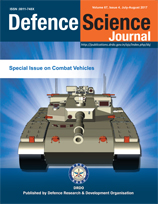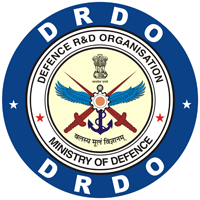Simulation of a Diesel Engine with Variable Geometry Turbocharger and Parametric Study of Variable Vane Position on Engine Performance
DOI:
https://doi.org/10.14429/dsj.67.11451Keywords:
Thermodynamic simulation, Variable geometry turbocharger, Diesel engineAbstract
Modelling of a turbocharger is of interest to the engine designer as the work developed by the turbine can be used to drive a compressor coupled to it. This positively influences charge air density and engine power to weight ratio. Variable geometry turbocharger (VGT) additionally has a controllable nozzle ring which is normally electro-pneumatically actuated. This additional degree of freedom offers efficient matching of the effective turbine area for a wide range of engine mass flow rates. Closing of the nozzle ring (vanes tangential to rotor) result in more turbine work and deliver higher boost pressure but it also increases the back pressure on the engine induced by reduced turbine effective area. This adversely affects the net engine torque as the pumping work required increases. Hence, the optimum vane position for a given engine operating point is to be found through simulations or experimentation. A thermodynamic simulation model of a 2.2l 4 cylinder diesel engine was developed for investigation of different control strategies. Model features map based performance prediction of the VGT. Performance of the engine was simulated for steady state operation and validated with experimentation. The results of the parametric study of VGT’s vane position on the engine performance are discussed.Downloads
Published
2017-06-30
How to Cite
Thomas, A. M., Samuel J., J., Pramod M., P., Ramesh, A., Murugesan, R., & Kumarasamy, A. (2017). Simulation of a Diesel Engine with Variable Geometry Turbocharger and Parametric Study of Variable Vane Position on Engine Performance. Defence Science Journal, 67(4), 375–381. https://doi.org/10.14429/dsj.67.11451
Issue
Section
Special Issue Papers
License
 Where otherwise noted, the Articles on this site are licensed under Creative Commons License: CC Attribution-Noncommercial-No Derivative Works 2.5 India
Where otherwise noted, the Articles on this site are licensed under Creative Commons License: CC Attribution-Noncommercial-No Derivative Works 2.5 India


